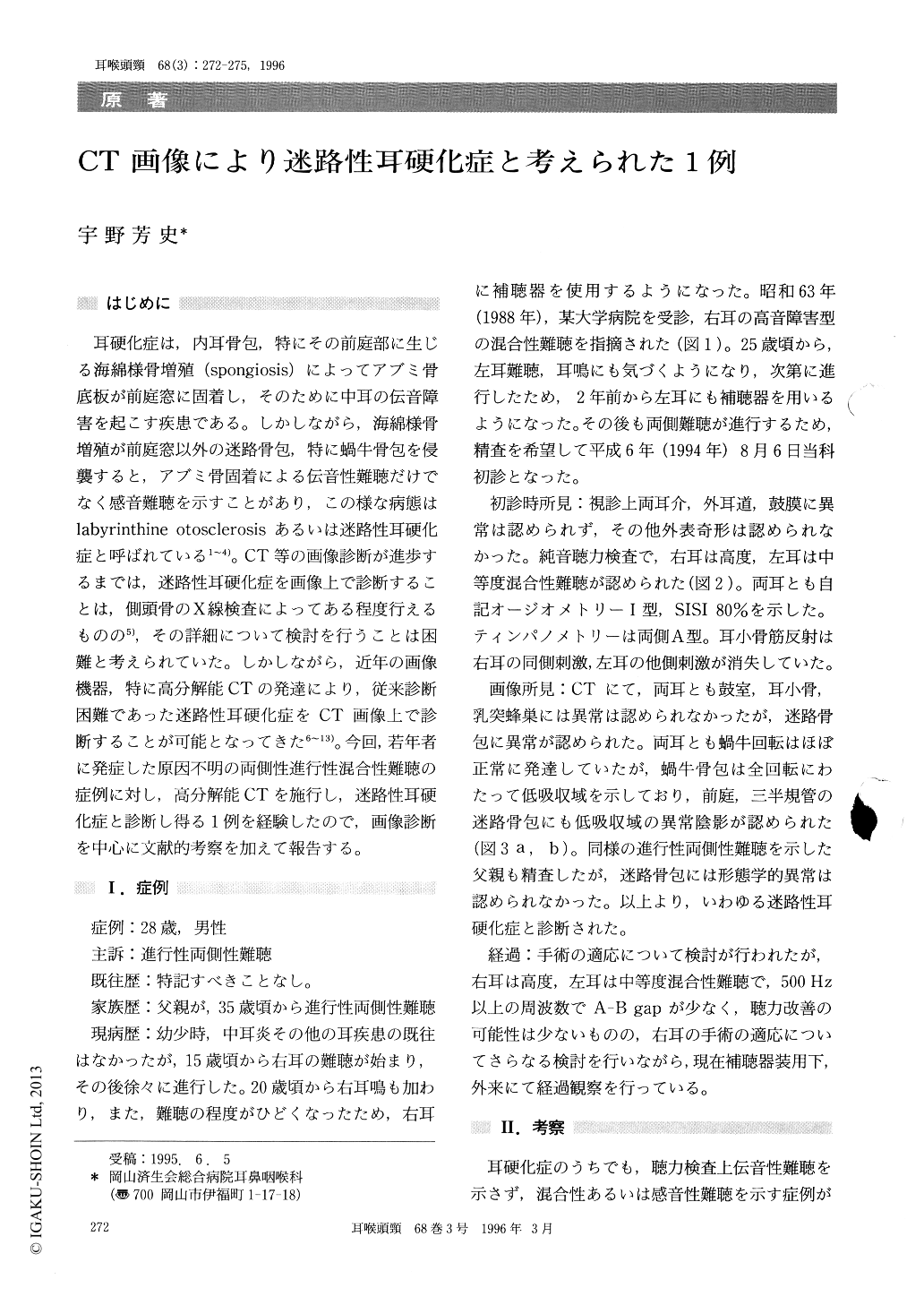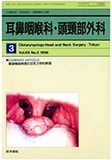Japanese
English
- 有料閲覧
- Abstract 文献概要
- 1ページ目 Look Inside
はじめに
耳硬化症は,内耳骨包,特にその前庭部に生じる海綿様骨増殖(spongiosis)によってアブミ骨底板が前庭窓に固着し,そのために中耳の伝音障害を起こす疾患である。しかしながら,海綿様骨増殖が前庭窓以外の迷路骨包,特に蝸牛骨包を侵襲すると,アブミ骨固着による伝音性難聴だけでなく感音難聴を示すことがあり,この様な病態はlabyrinthine otosclerosisあるいは迷路性耳硬化症と呼ばれている1〜4)。CT等の画像診断が進歩するまでは,迷路性耳硬化症を画像上で診断することは,側頭骨のX線検査によってある程度行えるものの5),その詳細について検討を行うことは困難と考えられていた。しかしながら,近年の画像機器,特に高分解能CTの発達により,従来診断困難であった迷路性耳硬化症をCT画像上で診断することが可能となってきた6〜13)。今回,若年者に発症した原因不明の両側性進行性混合性難聴の症例に対し,高分解能CTを施行し,迷路性耳硬化症と診断し得る1例を経験したので,画像診断を中心に文献的考察を加えて報告する。
A 28-year-old male with bilateral progressive mixed hearing loss was diagnosed as having labyrin-thine otosclerosis studied by high resolution CT. CT was valuable to demonstrate demineralization, changes in bony texture, and the easy recognition of subtle radiographic findings. We emphasized that for the conductive or mixed hearing loss of un-known etiology, high resolution CT should be per-formed to examine not only middle ear anomaly but also inner ear anomaly in detail.

Copyright © 1996, Igaku-Shoin Ltd. All rights reserved.


